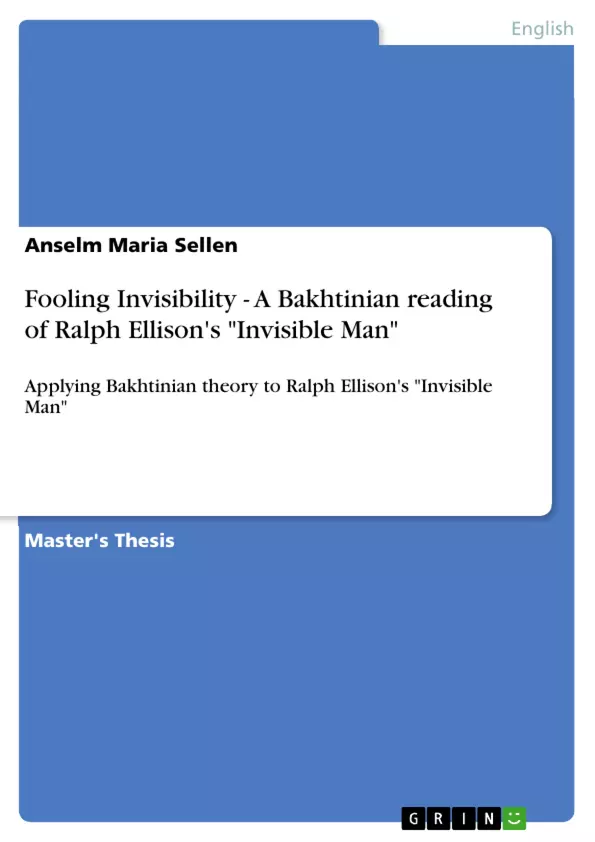Chapter One
Time-space and space-time: Consequences of the Chronotope in
Introduction
There must be possible a fiction which, leaving sociology and case histories to the scientists,
can arrive at the truth about the human condition, here and now, with all the bright magic of
the fairy tale.
- Ralph Ellison
[…] the study of verbal art can and must overcome the divorce between an abstract "formal"
approach and an equally abstract "ideological" approach. Form and content in discourse are
one, once we understand that verbal discourse is a social phenomenon - social throughout its
entire range and in each and every of its factors, from the sound image to the furthest reaches
of abstract meaning.
- Mikhail Bakhtin
_____________
In the process of preparation for this MA thesis I was on the verge of abandoning the project.
I was afraid Ralph Ellison’s novel Invisible Man would become far too intimate for me, the
subject too tense, the motifs too disturbing, the language too intrinsic. I feared that the novel
would keep concealed and invisible the wealth I suspect between the lines. I did not, and I still
don’t like Ellison’s Invisible Man. It felt uncomfortable and disturbing the first time I read it
and with every additional reading the ambivalence I felt increased. I sympathize and fully
share Ross Possnock’s sentiment on Ralph Ellison’s novel: “Ellison makes reading a
‘gymnast’s struggle’” (6). Despite all efforts, reading Invisible Man remained an
uncomfortable and exhausting struggle until the very end. Eventually Invisible Man provided
many experiences all adding up to some very disturbing revelations about my own
“racialized” positionality. I began to scrutinize, my thought process pertaining to race, trying
to expose any possible racist notions. The challenge was and still is painful and at times
causes my mind to go blank in speechlessness. Words evaded me more than once.
It was an essay by Chris Cuomo that kept the project alive. Cuomo opens her paper
with a powerful plea for help against her own whiteness.
“Could somebody please help me with my whiteness – that elusive form […]
Whiteness is so fucking unfair, so boring, so overdetermined (Cuomo in Yancy 16)
- Arbeit zitieren
- Anselm Maria Sellen (Autor:in), 2009, Fooling Invisibility - A Bakhtinian reading of Ralph Ellison's "Invisible Man", München, GRIN Verlag, https://www.grin.com/document/158858



